 Budget 2025: More Fuel For Your Auto Dreams?
Budget 2025: More Fuel For Your Auto Dreams?
 Ola S1 Gen 3 Series Launched
Ola S1 Gen 3 Series Launched

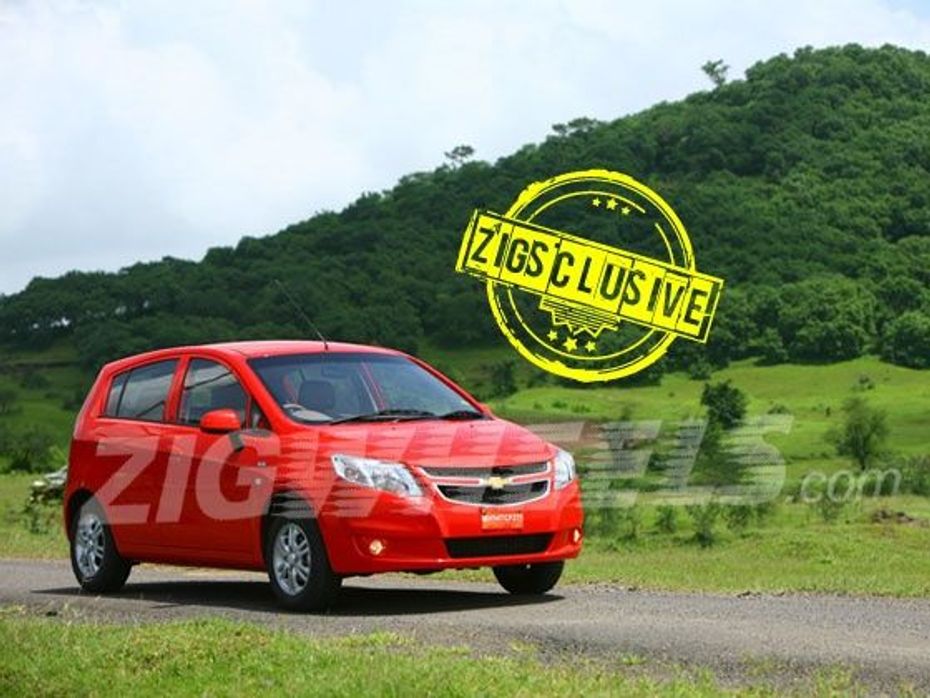
How important is the Indian car market to international car manufacturers? Well, that answer can be taken out of a page from GM India’s book. Let’s go back a few years, actually more than a few years when the GM saga began in India. It was 1994 when General Motors India Private Limited was established as a joint venture with Hindustan Motors to produce and sell Opels. While the cars were good, sales were pretty ordinary thanks to the high maintenance and very average fuel consumption. While the Opel brand finally disappeared into the sunset in 2006, GM’s other subsidiary; Chevrolet which was established in 2003 was pretty much the shining star at GMIPL.
The move to Chevrolet as GM’s marquee of choice globally was also coming into effect and given its earlier presence in India the move to replace Opel with Chevrolet was a logical one. With successful launches like the Optra sedan and the Tavera MUV, Chevrolet was GM’s knight in a bowtie. After years of struggling, GM had finally found its calling in India thanks to Chevrolet. Which brings us to the answer of how important the Indian market really is? Even after all the years of struggling, GM decided to stick on rather than just pack its bags. Their patience was finally paying dividends.
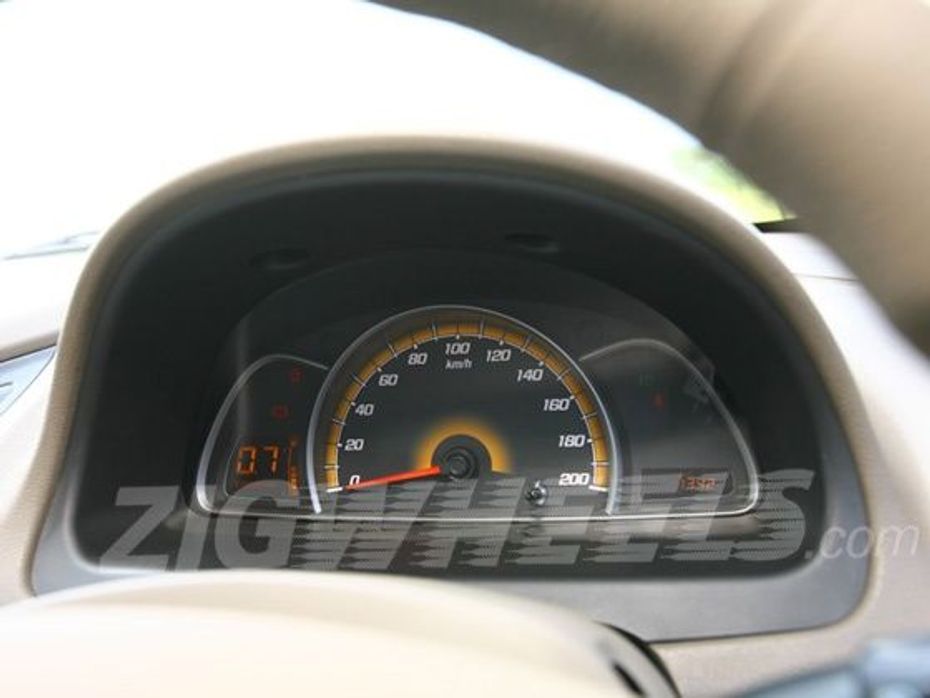
When it came to a hatch, Chevrolet came out with the Aveo U-VA. While it made for quite a sensible car, it didn’t really catch the buyers fancy thanks to a very staid design and an average engine. Space was pretty much the only virtue, but with cars like the Maruti Suzuki Swift and the Hyundai Getz, the U-VA could not really make a strong case for itself. But the 2012 Auto Expo showed us an all new U-VA which looked all set to change this brand’s history. Out went the Aveo and in came the Sail U-VA model name.
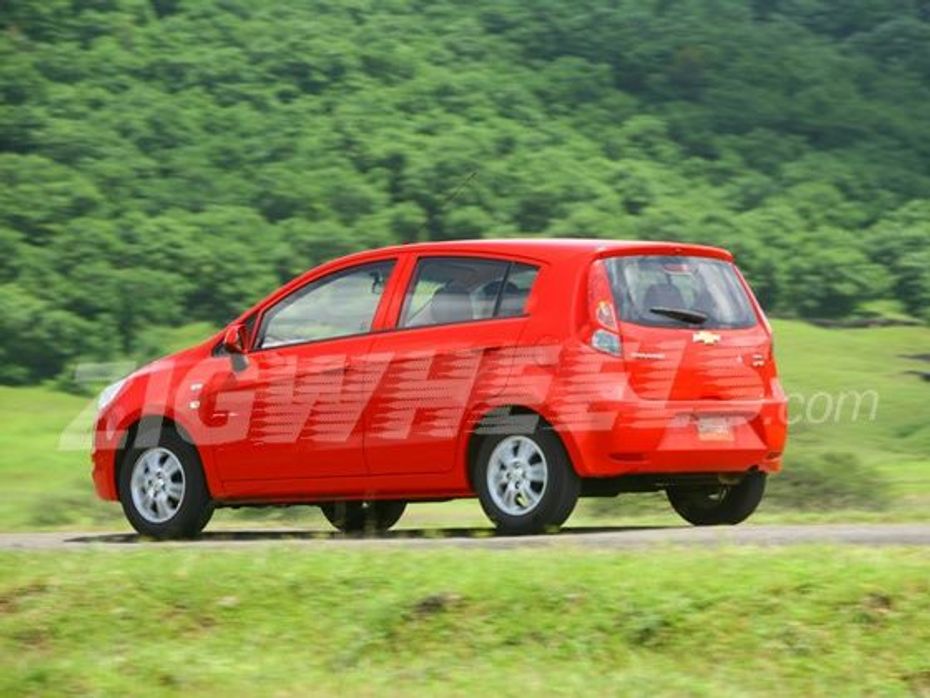
Now the Sail isn’t an all new car made for India like the Ford Figo or the Toyota Etios Liva. In fact, it sells in huge numbers elsewhere in an international market. This is where the GM-SAIC joint venture comes into the picture. China is increasingly becoming a hub for General Motors’ global operations as both a major market and now a design centre for the company’s South Asian operations, and the company was banking on a locally designed model to breathe new wind into its Indian subsidiary’s sails.
The Chevrolet Sail is notable not only for its sales success in China, but also for the fact that it was designed and developed at GM’s Pan-Asia Technical Automotive Center in Shanghai for China plus emerging markets, rather than in Europe or North America. Since then, the car has been a massive success in China where it occupies a niche for four-door family sedans. General Motors is hoping that the Shanghai-designed Sail which has been so successful in China will be the solution the company’s struggling Indian branch has been looking for in recent years. So will it work? Let’s find out…
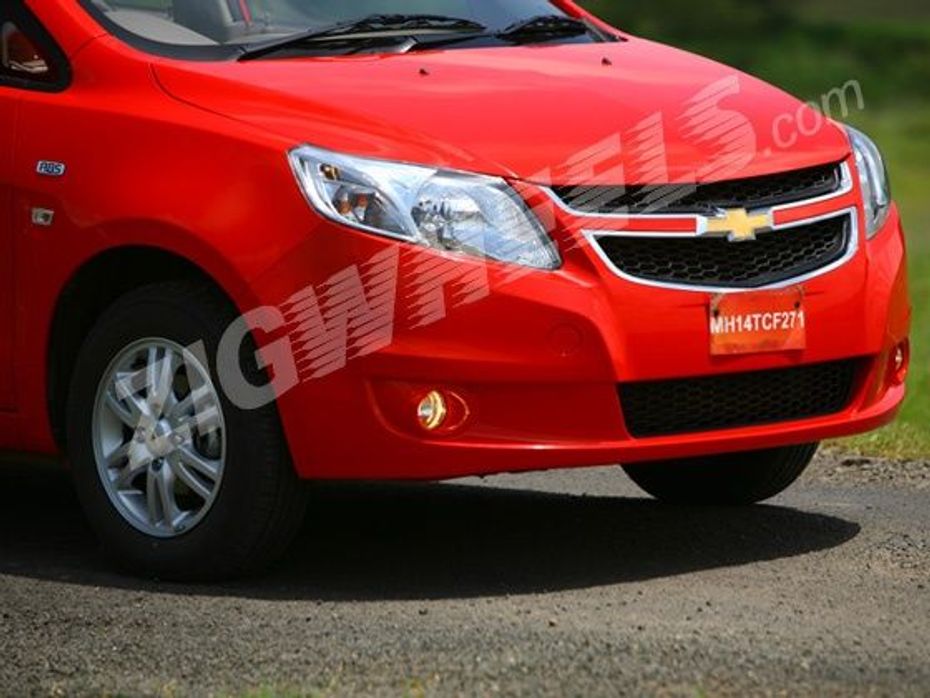
Evolutionary, rather than a revolutionary design
While the world already had an idea about what the Sail would look like, thanks to an almost production version shown at the 2012 Auto Expo, ZigWheels confirmed it by being the first to get spy shots of an un-camouflaged car in the open and the production version which we were introduced to sprang no new surprises. After coming out with the radical Beat, one would have expected something even funkier with the new car, but the Sail doesn’t really break any new ground as far as the styling is concerned. However when you compare it to its predecessor, the Aveo U-VA, the new car does look a whole lot fresher. Upfront, the twin slatted grille emblazoned with a gold bowtie leaves no doubt that this is a Chevy.
The lower fascia is also nicely detailed and the fog lights have been pretty well integrated. Moving around the side, a crisp bevel just below the window line and a parallel bulge between the wheel arches combine well to camouflage the U-VA’s tall, stubby profile. The roofline silhouette is at its highest just ahead of the A-pillar after which it troughs stylishly till the end. The rear however seems to be the only area where the designers seem to have lost the plot a bit. The vertically stacked tail lamps along with a flat tail gate don’t really inspire much flair. The 12-spoke wheels too at 14 inch look a tad smaller compared to the overall girth of the car. An upsize on the rim diameter would definitely add a lot more character. While we would have preferred the brilliant Sonic inspired design, overall, the Sail U-VA definitely comes across as a pleasant fresh face if not a showstopper.
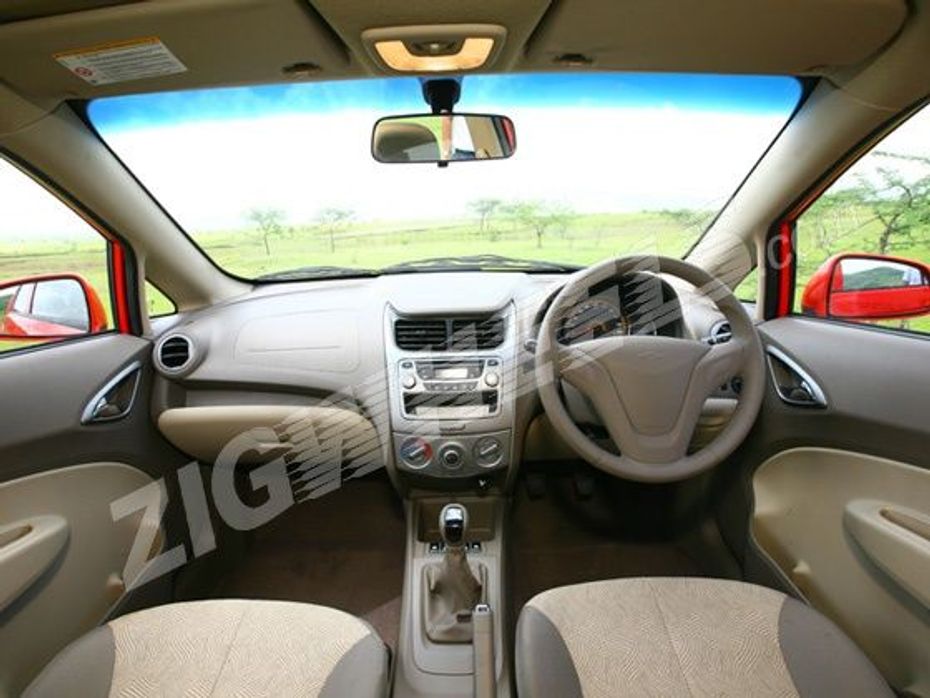
Space, plenty of it here!
Getting inside the cabin one would expect to find familiar parts, but surprisingly there is nothing common here with its other GM India stable mates. What hits you first is the nice airy cabin and the easy view throughout the glasshouse. The beige two-tone interiors with silver inserts feel pleasant and comfortable. Design, like on the outside, is pretty straightforward. No snazzy shapes on the dash, no radical console like in the Beat. Conventional and simple is the name of the game here.
The centre console consists of a music system with the least amount of buttons I have seen in a while. That definitely makes operating it a very simple and, not to mention, a very fuss-free affair. Even the steering wheel, which is nice to hold, is devoid of any steering-mounted controls. The horn, however, is placed only at certain points on either side making it difficult to operate when turning the wheel. Then there are the air-con controls which, with the regular rotary dials, look quite dated. Surprisingly, the top-of-the-line LT variant which we drove did not have climate control.
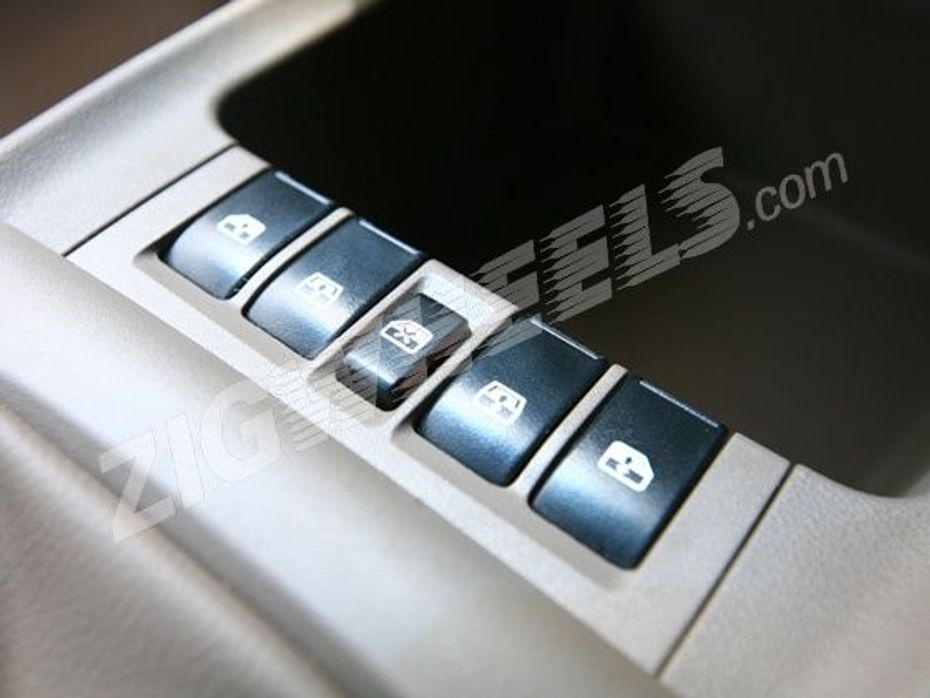
Further below ahead of the gear lever you spot an array of buttons which are basically the power window controls all stacked together. Not a very pleasant sight and not very ergonomically friendly either since you have to reach out for them. Coming to the instrument console we have a similar theme.
The speedo takes centre stage flanked by a small digital tachometer on the left and the usual tell-tale indicators on the right. While it’s clear and easy to read, a more modern elegant face design would have definitely added the much needed finesse. Quality of materials, especially the plastics is decent in most areas but could be improved. For example the rotary dials and most of the buttons felt quite flimsy. But considering this was a pre production prototype, we are hoping it gets better.

Moving past the details, as I made way onto the rear bench, the Sail’s real strength came to the fore. With extremely good legroom and more than decent under thigh support, space is really one of the Sail’s major fortes! While it might look smaller on the outside than its direct competition, the Maruti Swift, some really good packaging means the interiors are far more spacious and comfortable. The 248-litre volume boot also makes it one of the most spacious luggage haulers in its segment. Another fantastic feature is the flat folding rear bench. Yes, the rear seats actually fold fully flat with the lower bench going further below its normal position unlike other hatches in case you want to utilize the car just for luggage. If space is priority on your list, the Sail definitely won’t disappoint.
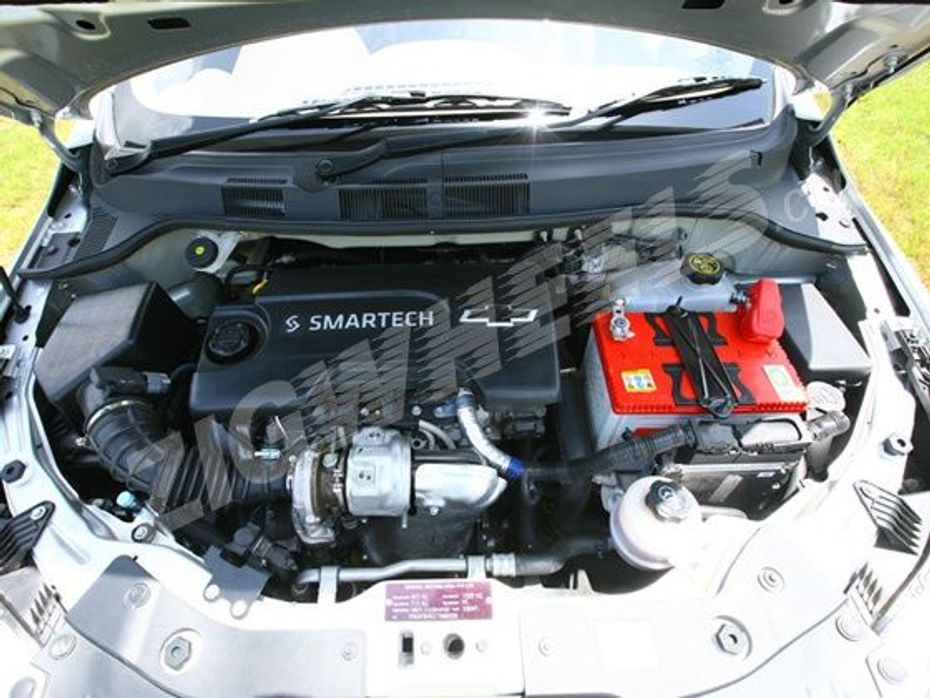
A petrol (if you can afford the fuel) and a well-known diesel for the Sail
Now this is where the commonalities begin, at least as far as the petrol motor is concerned. Under the hood is the same petrol unit from the Beat. However, the S-TEC II unit now puts out an impressive 86PS @ 6000 rpm compared to 80.5PS in the Beat. While displacement remains the same, the torque has gone up substantially as well and now stands at 113Nm @ 4400 rpm, a full 5 Nm increase over the Beat tuned motor!
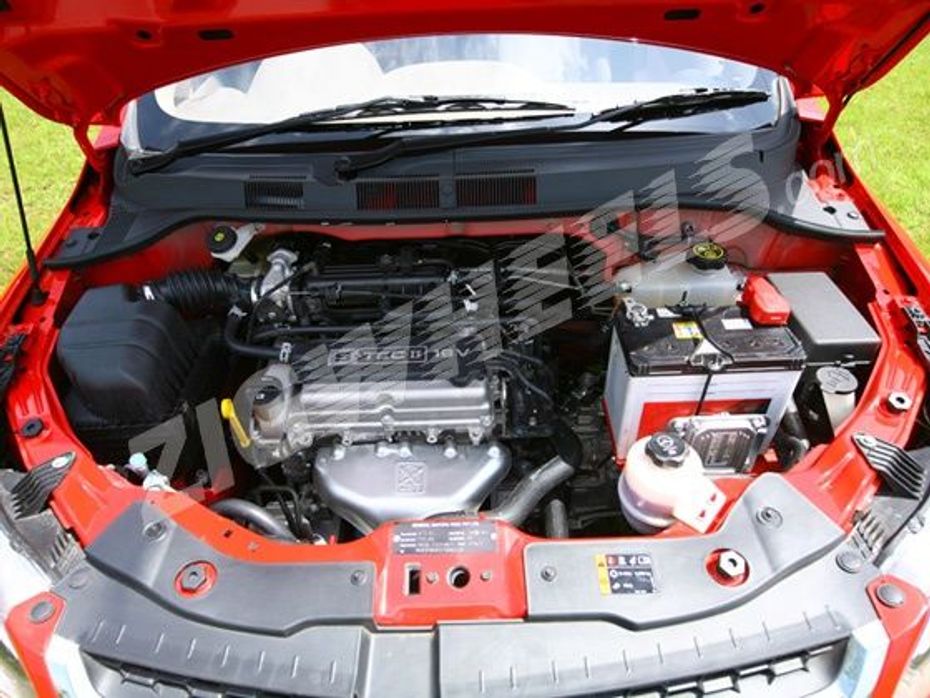
Open the hood of the diesel Sail and you are greeted by a Smartech diesel unit. At least that’s what the engine shroud says. But dig deeper and you’ll find it’s the brilliant MultiJet unit sourced from Fiat which also does duty as the DDiS, Quadrajet, CRDi4 and now the Smartech unit in cars from Suzuki, Tata and Premier Automobiles respectively. However, there is more to the engine than just the different name tag. Under the Sail U-VA’s hood, the engine puts out 78PS @ 4000 rpm and a very impressive 205Nm @ 1750 rpm (compared to the Swift’s 75 PS and 190 Nm). The most apparent change comes via the engine mapping and also the need to co-relate this with the somewhat reduced compression ratio in this application, moving to 16.5:1 as against the Swift DDiS which works with a 17.6:1 compression ratio.
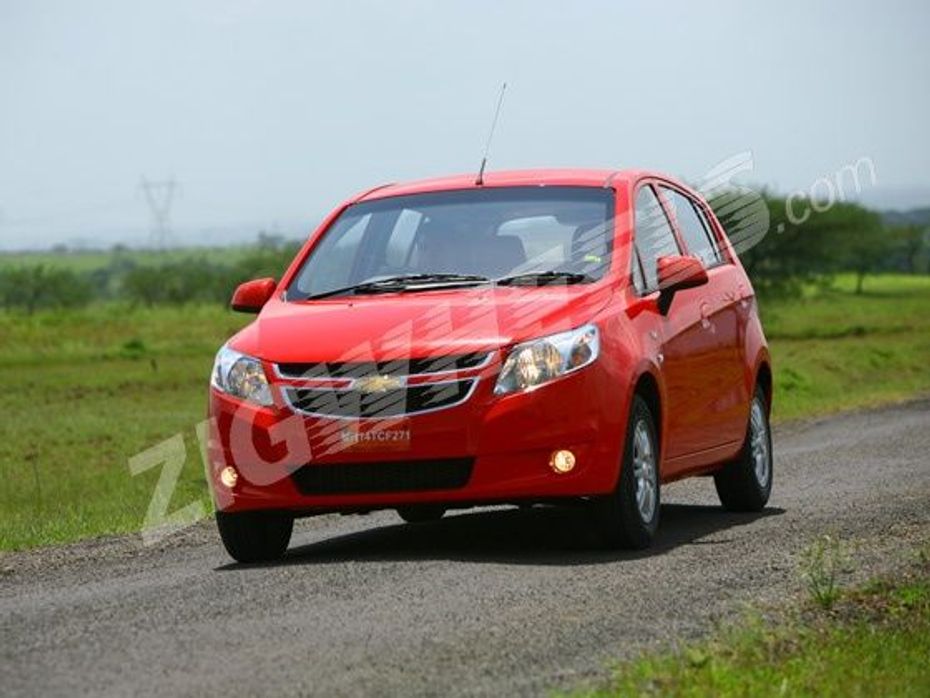
Torque talks
Getting behind the petrol Sail, the first impression you get of the motor is that it’s quite a refined unit. No gruff noise even when you rev it at idle and no vibrations either. At 86PS, one would expect the Sail to be a peppy performer; however the transition of those figures from the paper onto the road tells an entirely different story. The motor is quite peaky and at lower revs the performance isn’t very impressive. This was noticeable especially under a full load with the AC on. However once on the boil, the Sail moves quite swiftly. Gear shift action was good but got notchy at times telling you to dumb down the enthusiasm somewhat. However, only a real test will tell us how good or bad the Sail really is.
Getting into the diesel right after, the heavy clutch immediately lets you know about the oil burning motor under the hood. Building the revs slightly and dumping the clutch immediately tells you that the Sail diesel is a different animal altogether. Throttle response is terrific and once the turbo has spooled up, the Sail really pushes you back into the seat. While turbo lag is present, it felt quite manageable. How it feels in the cut and thrust of the city is what remains to be seen. However, if it’s performance you are looking at, the oilburner clearly outshines its petrol sibling.
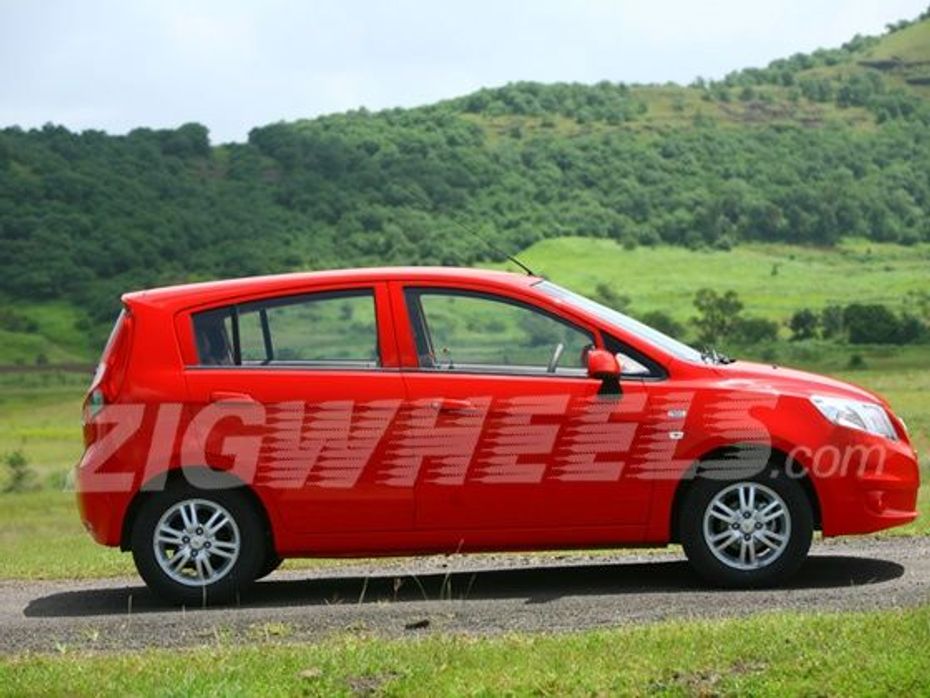
Poised Performer
GM has worked hard on the suspension set up and boy have they got it right! A McPherson strut with coil springs does duty at the front with a semi-independent set up at the back, which is not in anyway groundbreaking, but its how GM has tuned it that makes all the difference. Both the petrol and the heavier diesel have just the right suspension set up for our roads. The roads we drove on were pothole ridden over quite a distance, and both the cars just sailed over them – pun unintended! None of the thuds are filtered into the cabin with the car smothering them all with reassuring confidence. The steering too feels nice and meaty without feeling too light. But since we could not really drive long enough, I shall reserve my comments about the handling till we thoroughly test the car.
On the braking front, the front discs, rear drums set-up assisted by ABS and EBD work well but could do with better bite. However our surface was covered with dust and then some; a proper braking test will reveal exactly what the Sail offers.
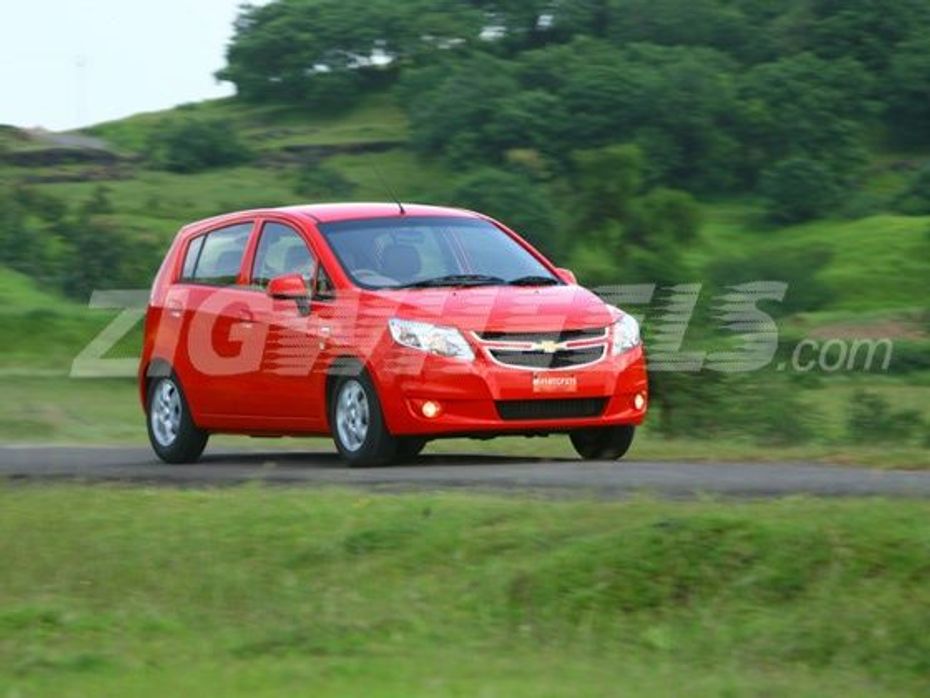
Has GM got it right this time then?
Well, the first impressions do look good and GM seem to have done quite a good job with the Sail. Well we could have done with more flair on the outside and inside, but then this car makes no bones about its function over form existence. From what it looks like, the Sail has the Swift as its direct competitor with the remaining long list following suit. With the petrol car inventories filling up thanks to the skyrocketing fuel prices, it will be the diesel version that should conjure up the bulk of the sales. And that’s a good thing because the diesel Sail definitely felt the better of the two. But what GM needs to do very importantly is get the pricing bang-on.
With the Swift outselling every hatch in India for some time now, it is pretty much the perfect rival with the others not too far behind and to get the better of them the Sail needs to nail the monetary aspect just right. Whether or not it will knock the wind out of the combined competitions’ strong sails, only time will tell but like our editor-in-chief says, this is the best way for Chinese-made and configured cars to enter the Indian market and hope to grab some critical mass!
CHEVROLET SAIL UVA - PETROL/DIESEL MODEL SPECIFICATIONS
|
|
Petrol |
Diesel |
|
Engine |
1199cc, in-line 4-cylinder, 16-valve DOHC, Petrol |
1248cc, in-line 4-cylinder, 16-valve, Diesel |
|
Max Power |
86PS @ 6000 rpm |
78PS @4000 rpm |
|
Max Torque |
113Nm @ 4400 rpm |
205Nm @1750 rpm |
|
Drive |
Front-Wheel Drive |
Front-Wheel drive |
|
Bore/stroke: |
69.5/79 |
69.7/82 |
|
Compression ratio: |
10.5 |
16.5 |
|
Gearbox |
Five-speed manual |
5-speed manual |
|
|
|
|
|
Suspension Front
Suspension Rear
|
Mcpherson Strut with Coil Spring and Stabilzer Bar Semi-independent Suspension with Coil Spring |
Mcpherson Strut with Coil Spring and Stabilzer Bar Semi-independent Suspension with Coil Spring |
|
|
|
|
|
Steering Type |
Rack and pinion, power assisted |
Rack and pinion, power assisted |
|
Type of Power assist |
Hydraulic |
Hydraulic |
|
Turns lock to lock |
2.95 |
2.95 |
|
Turning circle |
10.3m |
10.3m |
|
|
|
|
|
Wheels |
14 x 5.5 |
14 x 5.5 |
|
Tyre Size |
A175/70/R14 |
A175/70/R14 |
|
|
|
|
|
Brakes (F/R) |
Ventilated discs with front caliper Drum Brake |
Ventilated discs with front caliper Drum Brake |
|
Front Disc Size Rear Disc/Drum Size |
240 mm 200 mm |
240mm 200mm |
|
|
|
|
|
Dimensions |
|
|
|
Overall Length |
3946 mm |
3946 mm |
|
Overall Width |
1503 mm |
1503 mm |
|
Overall Height |
1690 mm |
1690 mm |
|
Wheelbase |
2465 mm |
2465 mm |
|
Track (F/R) |
1462 mm / 1457 mm |
1462 mm / 1457 mm |
|
Boot Space |
248 litres |
248 litres |
|
Ground Clearance |
174 mm |
168 mm |
|
Fuel Tank Capacity |
42 litres |
42-litres |
Related Chevrolet Sail UVA stories
Chevrolet Sail UVA : Special Coverage
Chevrolet Sail UVA launched at Rs 4.44 lakhs
Chevrolet Sail UVA : ZigWheels First Drive Pics!
Chevrolet Sail Variants and Technical Specifications
Chevrolet Sail U-VA Teaser Video
All new Chevrolet Aveo U-VA/Sail hatchback due soon
Chevrolet Sail U-VA to get 1.4 and 1.3 litre petrol and diesel engines
 Mahindra Scorpio N
Mahindra Scorpio N
 Royal Enfield Hunter 350
Royal Enfield Hunter 350
 Kia Syros
Kia Syros
 Royal Enfield Classic 350
Royal Enfield Classic 350
 Toyota Fortuner
Toyota Fortuner
India's largest automotive community
 Skoda Kylaq
Rs. 7.89 Lakh
Skoda Kylaq
Rs. 7.89 Lakh
 Mahindra XUV700
Rs. 13.99 Lakh
Mahindra XUV700
Rs. 13.99 Lakh
 Maruti FRONX
Rs. 7.51 Lakh
Maruti FRONX
Rs. 7.51 Lakh
 Maruti Brezza
Rs. 8.34 Lakh
Maruti Brezza
Rs. 8.34 Lakh
 Mahindra Scorpio
Rs. 13.61 Lakh
Mahindra Scorpio
Rs. 13.61 Lakh